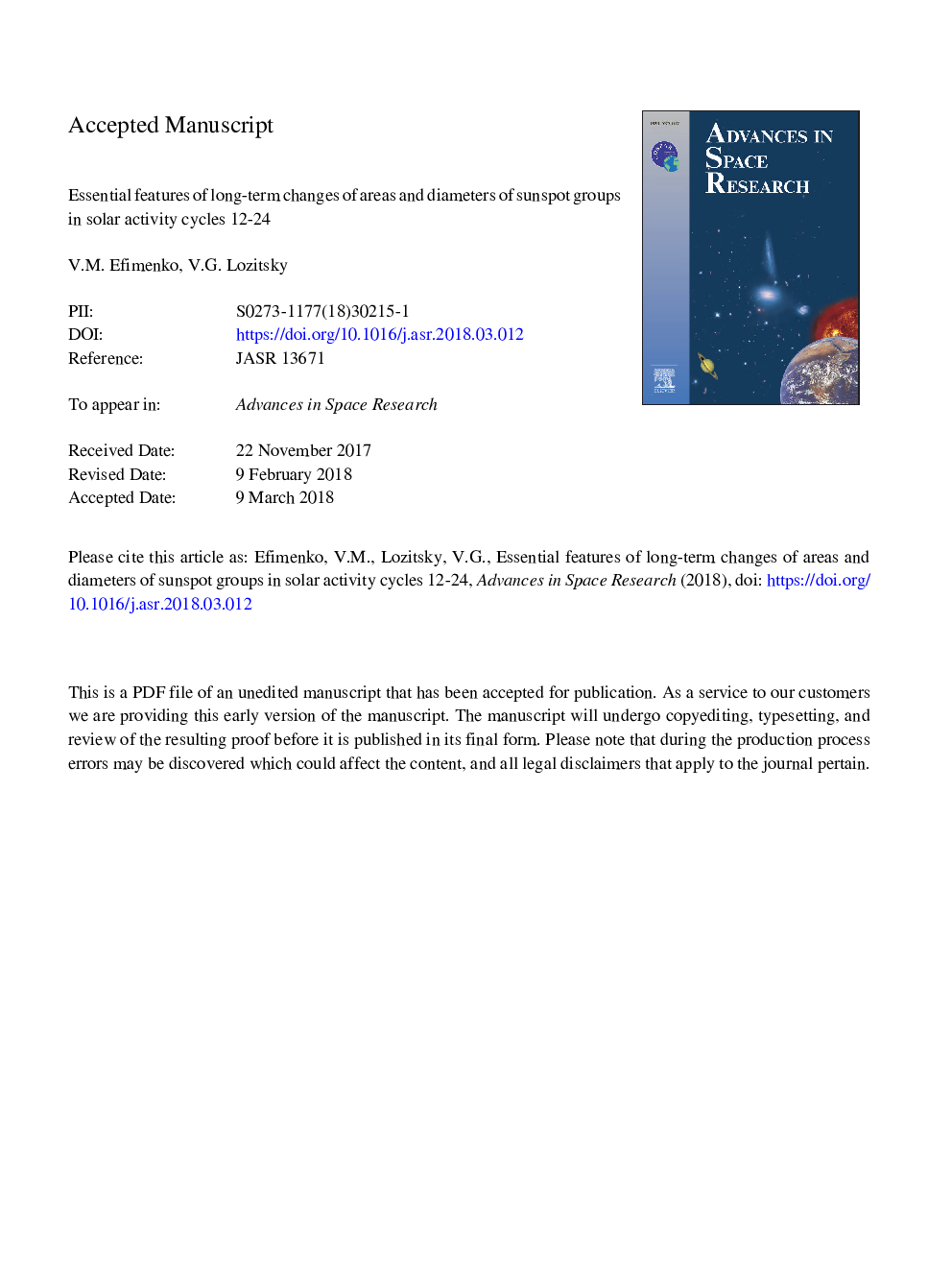| Article ID | Journal | Published Year | Pages | File Type |
|---|---|---|---|---|
| 8131905 | Advances in Space Research | 2018 | 12 Pages |
Abstract
We analyze the Greenwich catalog data on areas of sunspot groups of last thirteen solar cycles. Various parameters of sunspots are considered, namely: average monthly smoothed areas, maximum area for each year and equivalent diameters of groups of sunspots. The first parameter shows an exceptional power of the 19th cycle of solar activity, which appears here more contrastively than in the numbers of spots (that is, in Wolf's numbers). It was found that in the maximum areas of sunspot groups for a year there is a unique phenomenon: a short and high jump in the 18th cycle (in 1946-1947) that has no analogues in other cycles. We also studied the integral distributions for equivalent diameters and found the following: (a) the average value of the index of power-law approximation is 5.4 for the last 13 cycles and (b) there is reliable evidence of Hale's double cycle (about 44â¯years). Since this indicator reflects the dispersion of sunspot group diameters, the results obtained show that the convective zone of the Sun generates embryos of active regions in different statistical regimes which change with a cycle of about 44â¯years.
Keywords
Related Topics
Physical Sciences and Engineering
Earth and Planetary Sciences
Space and Planetary Science
Authors
V.M. Efimenko, V.G. Lozitsky,
